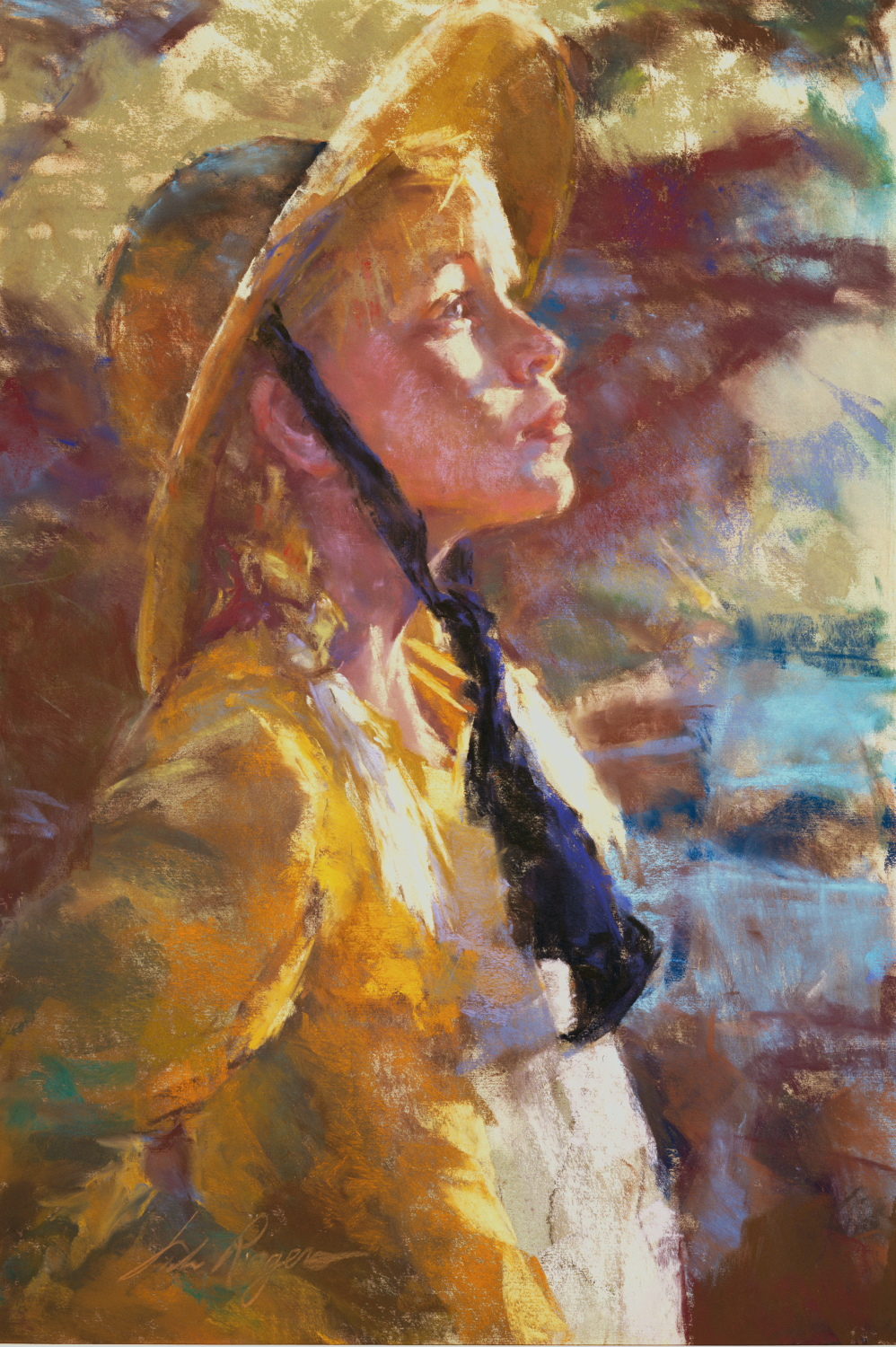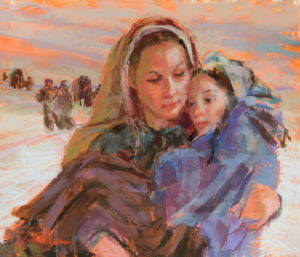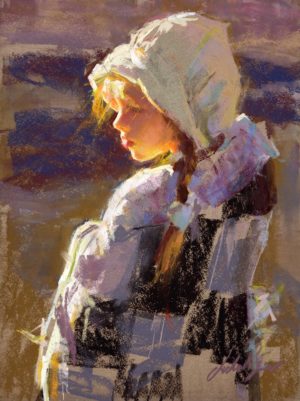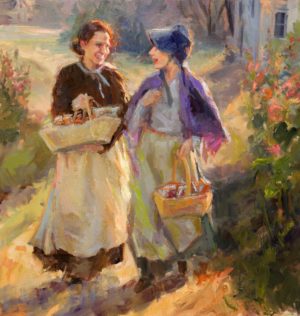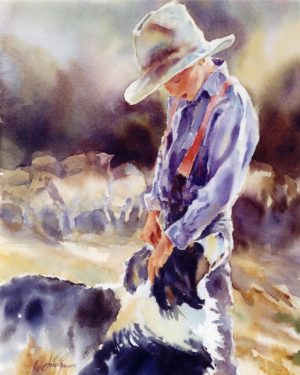Marie Wilhelmina Catherine Krause (Madsen), known as “Mina,” was born to German parents, Johan and Anna Krause, who lived in Denmark and operated a wheelwright nail factory which had belonged to Anna’s first husband. Mina’s mother had joined The Church of Jesus Christ of Latter-day Saints and helped the missionaries in Denmark as much as she could. One day a mob of persecutors came to the Krause home, broke the door and forced the missionaries to leave. Before leaving, however, they presented a small hymnbook to each of those present, including Mina and her mother. Mina loved to sing, had a beautiful singing voice, and cherished this book throughout her life. Mina’s mother, Anna, begged her husband to take her to Zion, which he was reluctant to do, not embracing her faith. As time passed, Anna began to sing a hymn from her book every day until her husband’s heart softened:
O Zion, when I think of thee,
I long for pinions like the dove,
And mourn to think that I should be
So distant from the land I love.
A captive exile, far from home.
For Zion’s sacred walls I sigh,
With ransomed kindred there to come,
And see Messiah eye to eye.
While here, I walk on hostile ground;
The few that I can call my friends
Are, like myself, in fetters bound,
And weariness our steps attends.
But yet we hope to see the day
When Zion’s children shall return,
When all our grief shall flee away,
And we again no more shall mourn.
The thought that such a day will come,
Makes e’en the exile’s portion sweet;
Though now we wander far from home,
In Zion soon we all shall meet.
Mina’s father, Johan, finally relented, sold the business, and planned to begin a new one in St. Louis, Missouri, making wagons for the pioneers. This relocation and reestablishment of a business required so much money for this family of eight that it was decided to let one child remain in Denmark with friends and go to America the following year. The drawn lot fell to Mina and the rest of the family left Copenhagen and arrived in St. Louis in 1855, where two sisters and Mina’s mother died from cholera in July. Meanwhile, in Denmark, Wilhelmina was unaware of the tragedy in her family and was preparing to sail with the Frandsen family when Marie Frandsen’s brother tried to prevent Marie from going to Utah. He told officials that Marie was stealing a child to take with her. The police officers took Mina’s clothes and precious song book and placed her in an orphanage with little but a gray uniform. Mormon missionaries were finally able to make the truth known and obtained her release, but the Frandsens had been compelled to leave Denmark in the meantime. The Elders arranged for Mina to then travel with the Lars and Bodil Madsen family in the next emigrant group. It was now 1856 and she had just turned 9 years old. So many emigrants died from cholera near the southern United States ports that in 1856, Brigham Young set up a new outfitting point for the Saints in Iowa City, Iowa, then the terminus of the railroad. Here they joined the Hodgett Wagon Company and traveled alongside the Martin Handcart Company. Johann Krause’s inquiries for his daughter went unanswered in St. Louis. Mina became quite close to the Madsen family and was broken-hearted when Brother Madsen died from hunger and exposure at Devil’s Gate in early Nov. 1856. She remained with the Madsen family upon reaching Utah, eventually married their son, Niels Peter, and settled in Mt. Pleasant, Utah. When Mina was older, she placed an ad in a St. Louis, Missouri, newspaper, searching for her family. Her father and sister, Augusta, saw the ad and came to Utah where the family was reunited after 32 years. Johan had never joined the Church and was bitter about the situation, maintaining that the Mormons had stolen his daughter. He and his step-son, Frederick Abel, had become millionaires in St. Louis, having pioneered the plumbing business. Frederick visited Mina a few years later and offered her anything to renounce her faith and return with her children to St. Louis. Mina refused. She did stay in contact however with her two sisters, Augusta and Caroline, in St. Louis. Mina lived a life full of faith, hope and charity. Known as “Sister Mina” she was a beloved Relief Society President. She played her accordion and sang to her neighbors. She lost eyesight in one eye but continued to read to her children from the Book of Mormon daily. Her children said that many times they saw her crying as though her heart would break, then going to her bedroom to pray and coming out smiling, feeling God had given her strength to bear her troubles. They wrote: “By her teachings and her good example she instilled into our hearts the good things of life, and taught us to live the Gospel which was so dear to her. She has been a beacon light to us all our lives… She had a testimony of the gospel. She knew it was true and that there is a God who answers prayers. She paid a full tithing and she kept the Word of Wisdom and we never heard her swear or even use slang…. [Her mother’s] hope and cherished dream of gathering to Zion with the Saints was not to become a reality, but her great faith paved the way for her daughter, Wilhelmina, to be among those whose names were to be carved in Utah’s history.”

